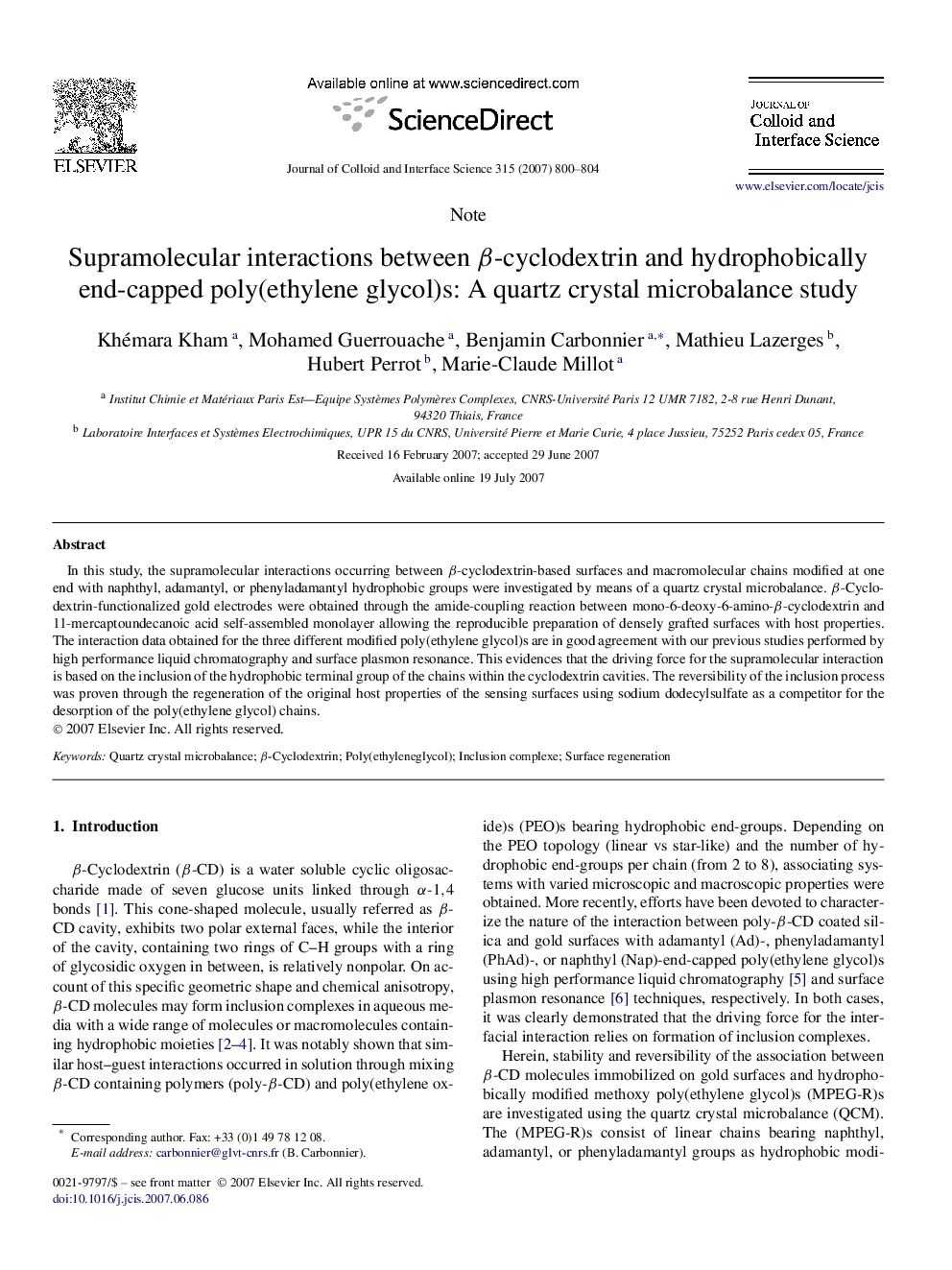| Article ID | Journal | Published Year | Pages | File Type |
|---|---|---|---|---|
| 612198 | Journal of Colloid and Interface Science | 2007 | 5 Pages |
In this study, the supramolecular interactions occurring between β-cyclodextrin-based surfaces and macromolecular chains modified at one end with naphthyl, adamantyl, or phenyladamantyl hydrophobic groups were investigated by means of a quartz crystal microbalance. β-Cyclodextrin-functionalized gold electrodes were obtained through the amide-coupling reaction between mono-6-deoxy-6-amino-β-cyclodextrin and 11-mercaptoundecanoic acid self-assembled monolayer allowing the reproducible preparation of densely grafted surfaces with host properties. The interaction data obtained for the three different modified poly(ethylene glycol)s are in good agreement with our previous studies performed by high performance liquid chromatography and surface plasmon resonance. This evidences that the driving force for the supramolecular interaction is based on the inclusion of the hydrophobic terminal group of the chains within the cyclodextrin cavities. The reversibility of the inclusion process was proven through the regeneration of the original host properties of the sensing surfaces using sodium dodecylsulfate as a competitor for the desorption of the poly(ethylene glycol) chains.
Graphical abstractβ-Cyclodextrin-functionalized surface was prepared and supramolecular interaction investigation with hydrophobic methoxypoly(ethylene glycol) was performed by the quartz crystal microbalance showing that the driving force for interaction is based on inclusion complexes.Figure optionsDownload full-size imageDownload as PowerPoint slide
